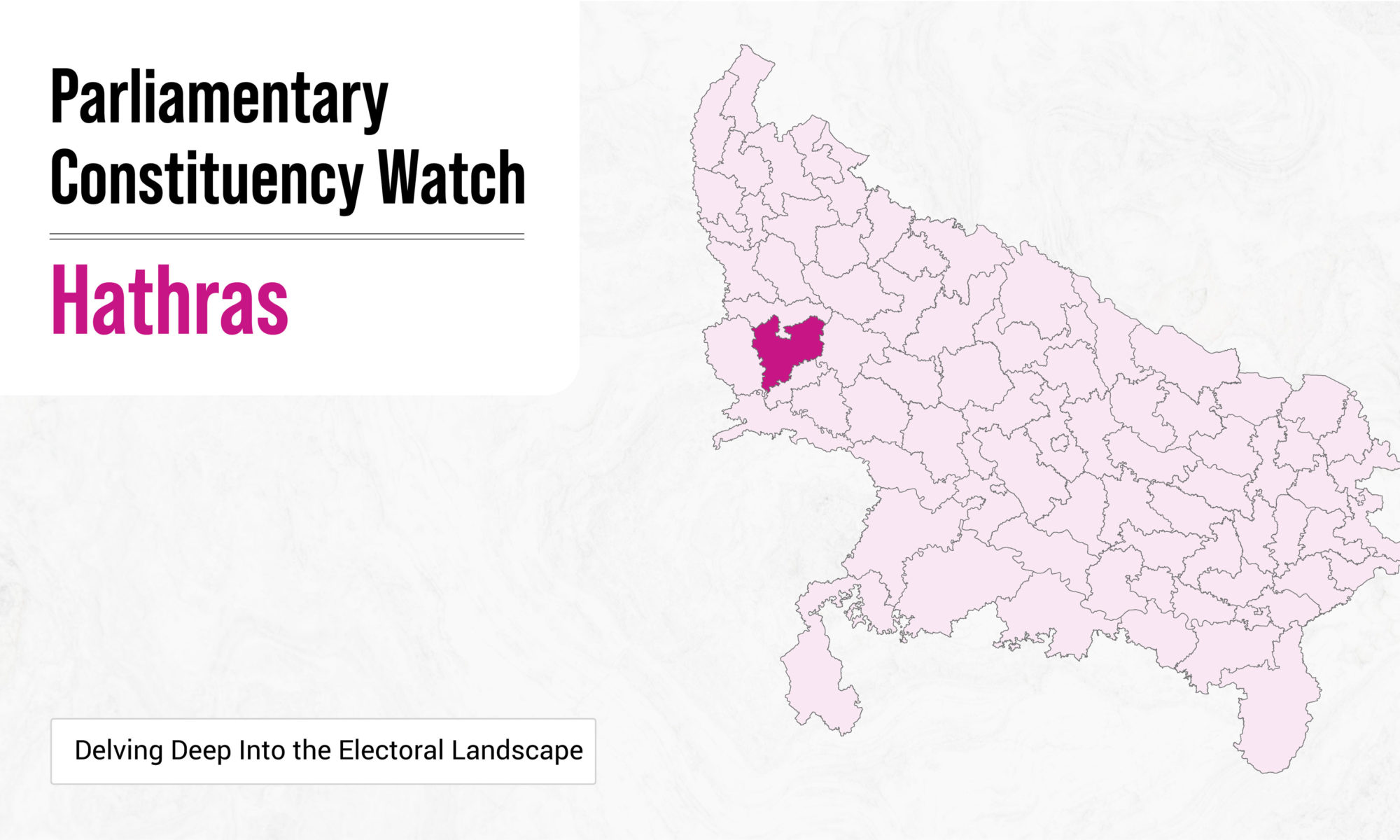Location
Hathras Lok Sabha constituency is one of the 80 Lok Sabha constituencies in the Indian state of Uttar Pradesh. It comprises 5 assembly constituencies and 2 districts.
Category
Designated as a Scheduled Castes Constituency.
Voter Turnout
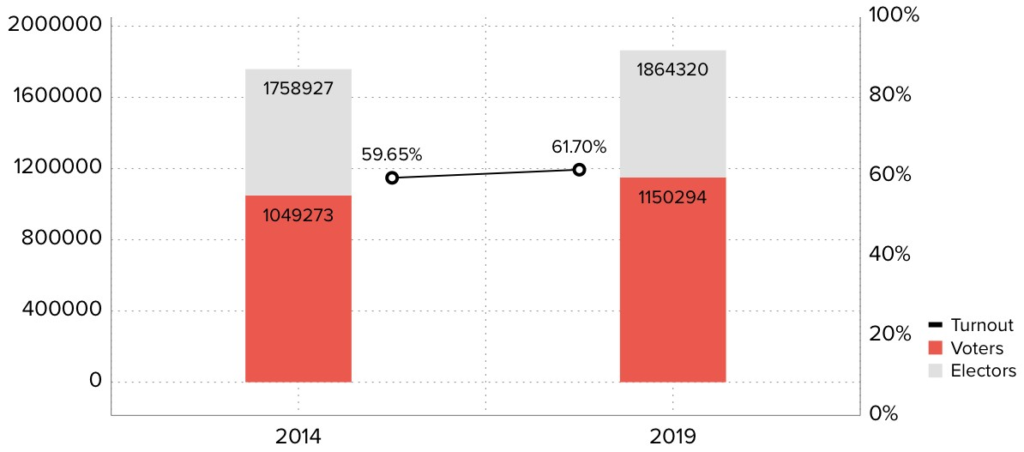
Hathras Electoral Turnout Rates
During the 2014 elections, the total number of electors was 17,58,927 and the turnout stood at 59.65%, in real numbers- 10,49,273 voters. 2019 witnessed a turnout increase; out of the 18,64,320 electors, 61.70% of voters exercised their constitutional rights. In real numbers- 11,50,294 voters.
Representation and Results
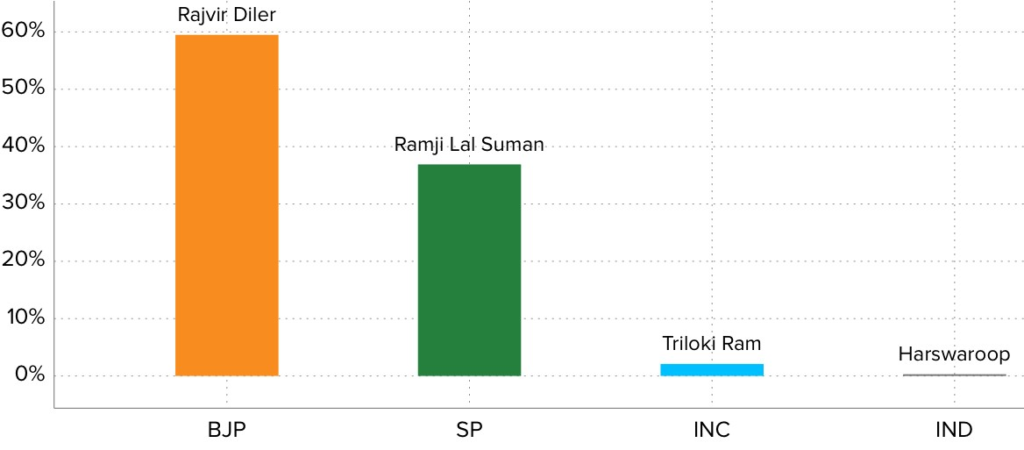
Party Wise Vote Share
2019’s parliamentary election winner, BJP’s Rajvir Diler gained a vote share of 59.50% and defeated SP’s Ramji Lal Suman whose vote share stood at 36.90%. The other prominent candidates in the fray were INC’s Tirloki Ram with a vote share of 2.10% and independent candidate Harswaroop with 0.30% of vote share.
Voting History –2014 & 2019
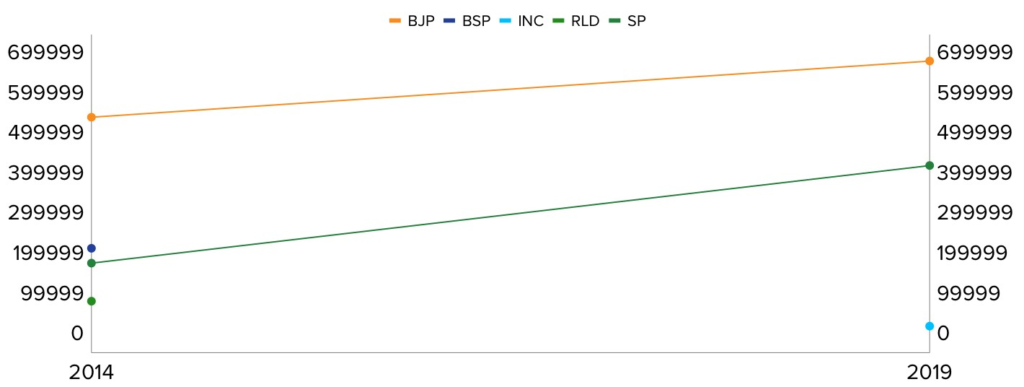
Party Wise Shift in Votes
In 2014, BJP won the constituency and earned 5,44,277 votes followed by 6,84,299 votes in the 2019 election victory. On the other hand, SP garnered 1,80,891 votes in 2014 and 4,24,091 votes in the 2019 elections.
Parties at helm through the years
The Hathras constituency has been represented by a number of different parties over the years.
The Indian National Congress (INC) initially led the country in 1952 and 1957. However, the political dynamics shifted with the emergence of the Republican Party of India (RPI) in 1962, though INC returned briefly through a by-election the same year. The INC continued to play a prominent role in Indian politics in subsequent years, but in 1977, the Janata Party (JP) took the helm.

Timeline of Winning Parties
JP retained power in 1980, but INC regained it in 1984. The late 1980s saw the rise of the Janata Dal (JD), followed by the Bharatiya Janata Party (BJP) claiming power in 1991, 1996, 1998, and 1999. The 21st century witnessed the BJP’s resurgence, with victories in 2004, 2014, and 2019, while the Rashtriya Lok Dal (RLD) briefly held power in 2009.
Party-wise success rate
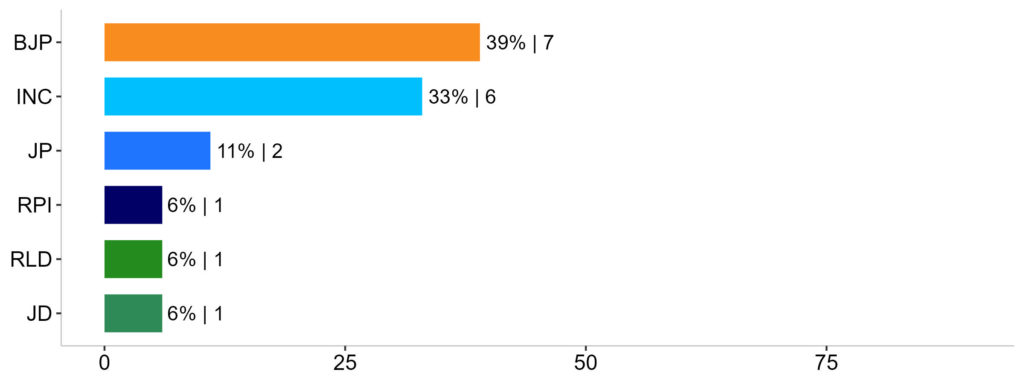
Success Rate
In terms of the success rate in securing the Hathras Lok Sabha seat, BJP and INC had exhibited the highest rate of success over the years, standing at 39% and 33% respectively. Among other prominent parties, JD enjoyed a success rate of 6%.
Gender Wise Distribution of Contestants
During the 2009 elections, there were 10 contestants and 8 of them were male and 2 females, in percentage- 80% and & 20%. In 2014, the total number of contestants decreased to 9, and all the participants were males.

Gender Wise Distribution of Candidates
In 2019, the total number of contestants further decreased to mere 8 with participation like prior election remained limited to male gender.
Gender wise voter turnout
In 2009, out of a total of 14,34,781 electors, 6,48,392 voters cast their ballots. Of the 7,97,802 male electors, 3,94,783 participated in the election, constituting a turnout rate of 49%. There were 6,63,979 female electors and of that, 2,53,609 chose to vote with a turnout rate of 40%.
In 2014, there are 17,58,927 people who are eligible to vote and 10,49,273 of them chose to exercise their right to vote. Out of these, 9,69,908 were male electors and 7,89,019 were female electors. 62% of male electors (5,96,931) and 57% of female electors (4,52,342) cast their ballots.
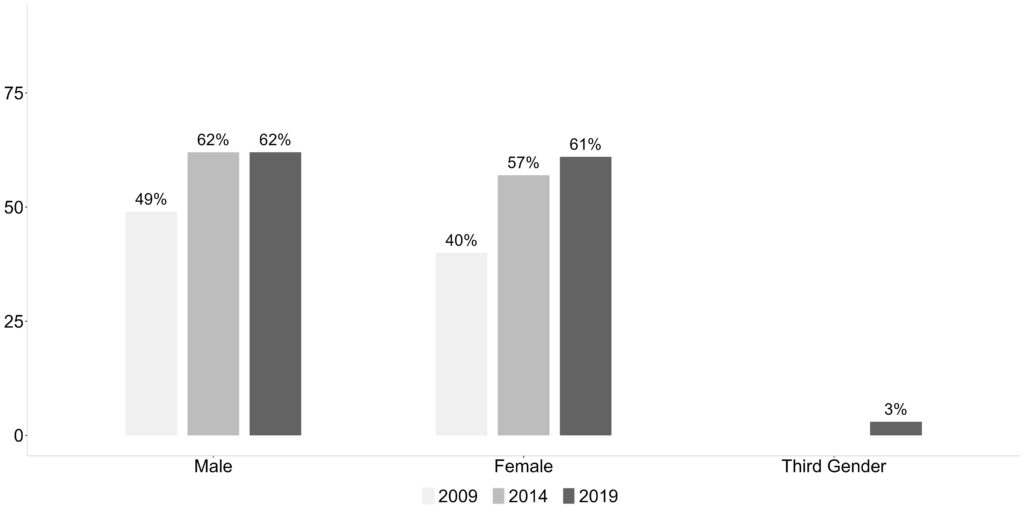
Gender Wise Voter Turnout
The total count of electors in 2019 was 18,64,320 out of which 11,44,035 chose to cast their ballot in the parliamentary elections. Out of 10,09,746 male electors, only 62% voted which is 6,21,305 male voters in real numbers. On the other hand, the voter turnout for females stood at 61% which translates to 5,22,728 voters out of a total of 8,54,512 female electors in real number.
In 2017, transgender people were included as a separate category of the third gender in electoral rolls. There were 62 electors belonging to the third gender category in the parliamentary constituency during the 2019 elections. And 2 of them exercised their newly granted constitutional right to vote and thus their turnout stood at 3%.
Gender-Wise Literacy Rate
We are taking a peek at the gender-wise literacy rate of the Hathras and Aligarh districts which are part of the Hathras parliamentary constituency as literacy is considered an essential indicator of the socioeconomic development of the region.
Hathras District
The 2011 census of India has pegged the overall literacy rate of the Hathras district at 60%. Gender-wise, the male literacy rate in the district is 69% whereas, for females, the literacy rate stands at 50%.

Gender Wise Literacy Rate
Aligarh District
The overall literacy rate of the district is 57%. However, when it comes to gender, the literacy rate for males in the district stands at 66% while the female literacy rate is 47%.
Stay updated on the electoral statistics for parliamentary constituencies and the changing dynamics on Meradesh App. Available on Appstore and Play Store.
Reach your constituents, gain insights into their motivations, and build campaigns based on data-driven strategies with the Meradesh Platform.
Data Source – Meradesh.org
